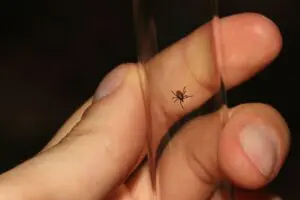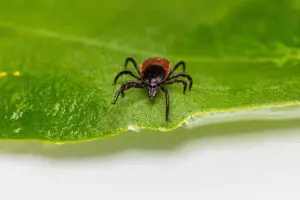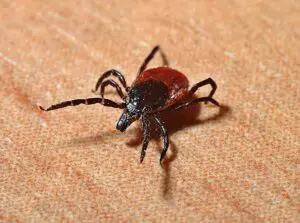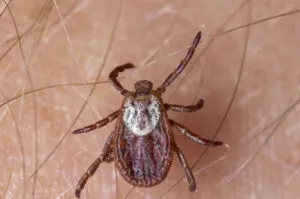
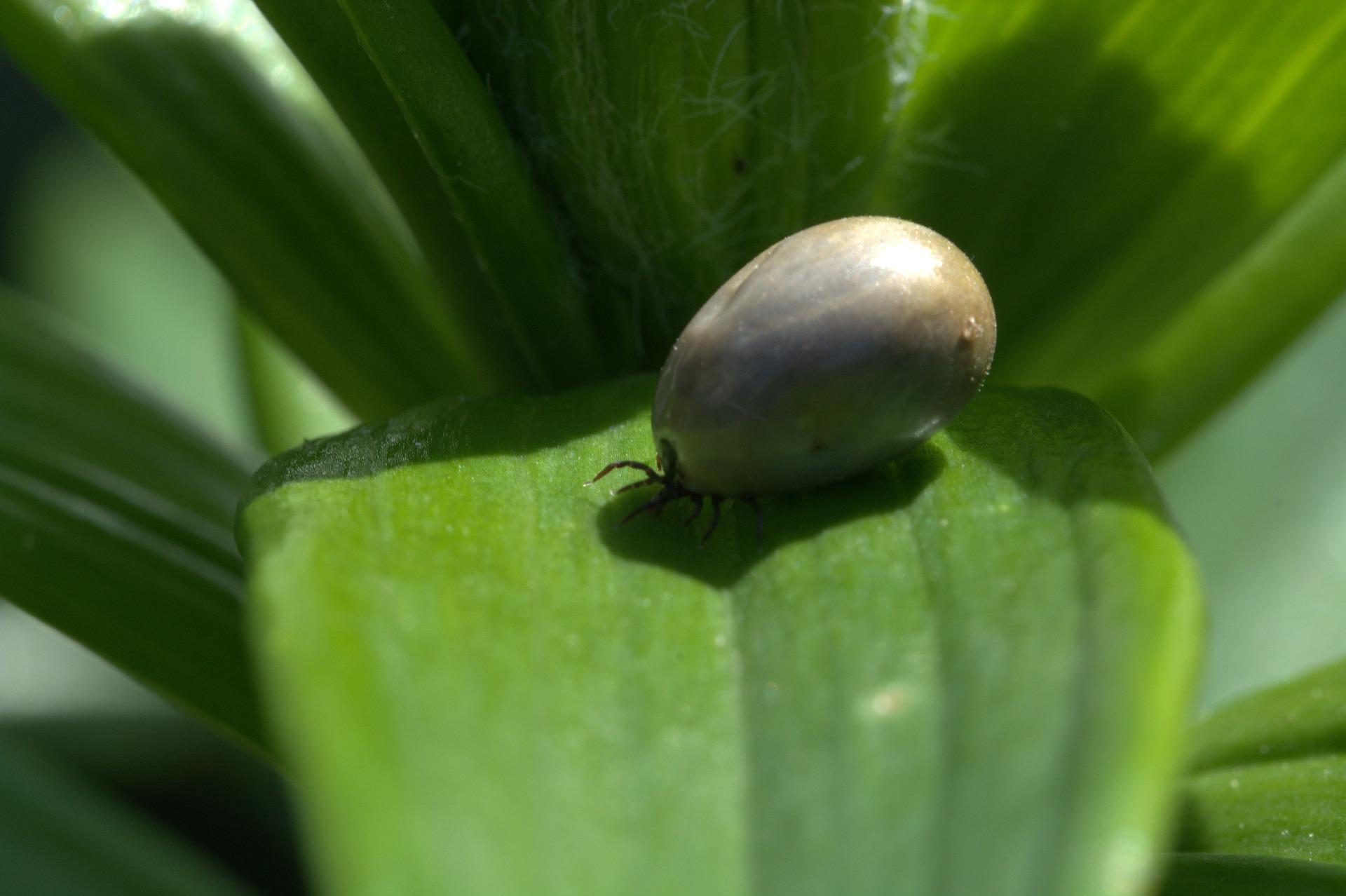
Tick season can be a nerve-wracking time of year because of the hazards ticks present. What’s more, ticks are expanding their ranges due to climate change, increasing the danger they already pose. There’s no need to worry, though, because this guide will tell you everything you need to know about tick borne illnesses and how to avoid them.
What are tick borne diseases?
Ticks are known to carry a number of bacteria, viruses, and parasites, which many species can transmit to humans. The term “tick borne diseases” refers to the illnesses caused by these pathogens. According to the CDC, the most common tick borne diseases in the United States are Lyme disease, babesiosis, ehrlichiosis, Rocky Mountain Spotted Fever, anaplasmosis, Southern Tick-Associated Rash Illness (STARI), Tick-Borne Relapsing Fever, and tularemia. There are around 90 tick species in the U.S., most of which are able to spread these diseases. The most commonly encountered of those 90 species are American dog ticks, also known as wood ticks, and blacklegged ticks, also known as deer ticks. Lone star ticks are common as well.
How do ticks spread diseases?
The short answer is that ticks transmit pathogens through their saliva when they take a blood meal. They have a very extensive meal process- a tick can spend up to two hours just preparing to feed! Once they have found a suitable spot and preparation is complete, ticks grab the host’s skin and make a cut. They then insert their feeding tube into the host. The feeding tubes of ticks have barbs to keep them anchored in the host. In addition to the barbs, ticks secrete a cement-like substance that helps to keep them attached for the duration of their meal. This may sound like a painful process for the host, but a tick’s saliva has anesthetic properties which numb the bite area so the host cannot feel that the tick is there. If it is not removed, a tick will generally stay attached for anywhere from 2 to 10 days. The length of the meal changes depending on species and life cycle stage. While feeding, the tick slowly sucks up blood, and small amounts of the tick’s saliva enter the host. There are two things that can occur during the feeding period. One- the tick may contract any diseases that are in the host’s blood. Two- the tick can transmit any diseases it is carrying to the host. If a tick is not carrying any diseases, it cannot spread anything. However, if it picks up a pathogen from its current host, it can pass on said pathogen to its next host, which is how tick borne illnesses are spread.
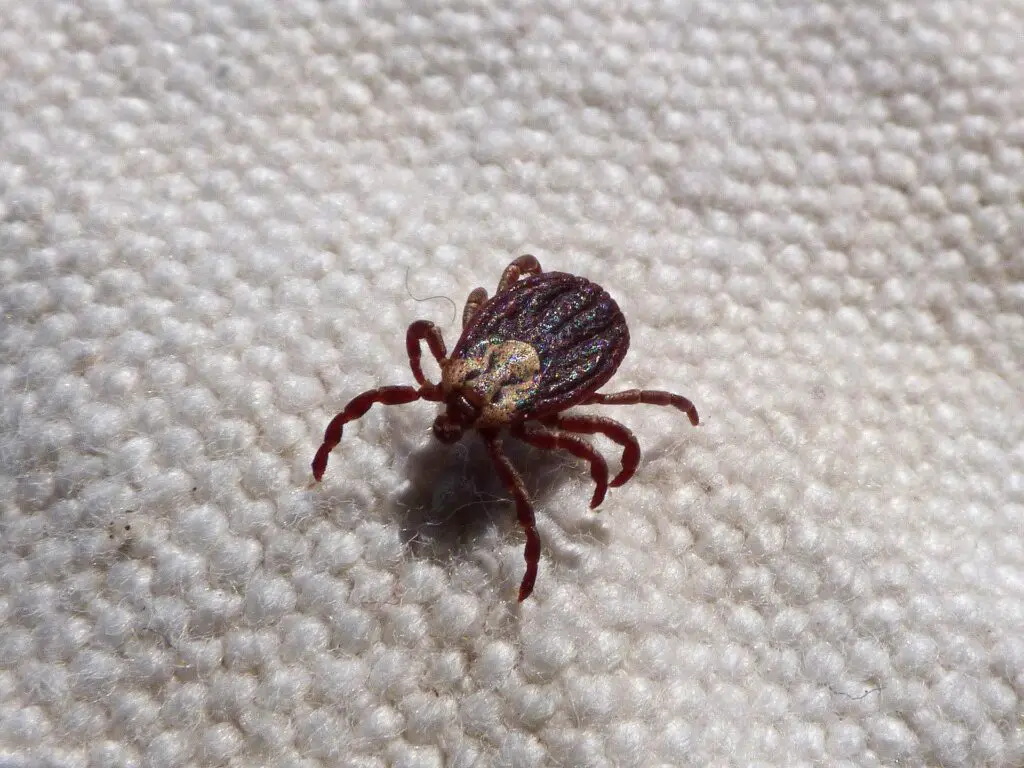
How long do ticks need to be attached to transmit disease?
It is commonly thought that a tick needs to be attached for more than 24 hours to transmit diseases and for the most part, this is true. However, no official minimum time has been established and it is possible for disease transmission to occur within 16 hours or less. In the case of Lyme disease, a partially fed tick that finds a new host to finish its meal can transmit the disease much more quickly than a tick that has not fed at all. Overall, the likelihood of disease transmission increases the longer a tick is attached, so it is best to remove ticks as soon as they are found.
Are tick borne diseases contagious?
No. Tick borne illnesses are not contagious since they are spread by a tick’s saliva entering the host’s bloodstream- not from physical contact or airborne particles. This means that they cannot spread from person to person except through blood and organ donation, or by an infected person’s blood accidentally entering another person’s bloodstream, for instance through a cut.
What are the symptoms of tick borne diseases?
Most tick borne illnesses present a similar set of symptoms, which will vary in severity depending on the disease and the person who contracted it. The following are the universal symptoms of tick borne diseases:
- Fever and Chills
All tick borne illnesses can lead to fever, which is often accompanied by chills.
- Aches and Pains
Aches and pains are common symptoms of tick borne diseases. Some such pains include headache, muscle aches, and fatigue. Lyme disease can also cause joint pain.
- Rashes
Rashes are often associated with certain tick borne diseases. These rashes look different from one disease to the next.
- Lyme disease causes a circular, expanding rash that resembles a target.
- STARI causes a red, expanding rash that reaches a diameter of 3 inches or more. This rash should not be confused with the irritation that is common at the site of a tick bite. Normal redness from a tick bite occupies a much smaller area than a STARI rash.
- Rocky Mountain Spotted Fever causes small pink spots to appear on the ankles, wrists, and forearms. The rash may spread to the trunk, the palms of the hands, and the soles of the feet. If left untreated, petechiae may develop signaling severe illness.
- Ehrlichiosis causes a rash that looks like red splotches or pinpoint dots.
- Tularemia has multiple forms but the most common form, ulceroglandular, causes an ulcer to appear where the tularemia bacteria entered the body- in this case at the site of the tick bite.
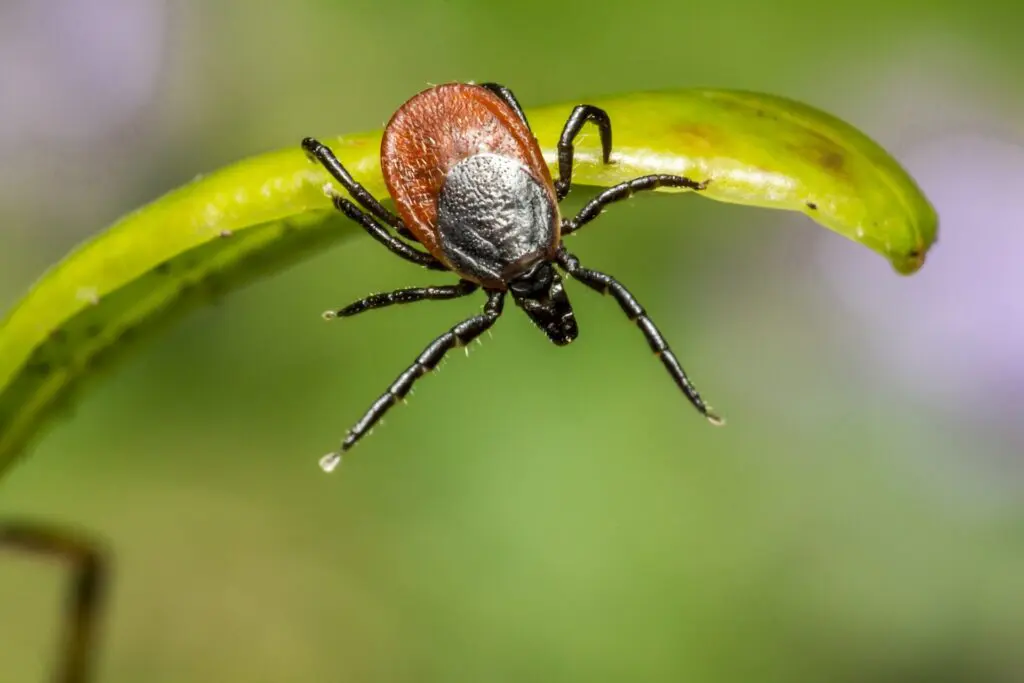
How to prevent tick borne diseases
Before venturing into wooded or tall grass areas, apply insect repellent that has either permethrin or DEET in it. Wear long pants and a long sleeve shirt as well as tall socks. Clothing should be light in color and can be treated with clothing-only tick repellent that contains a minimum of 0.5% permethrin. Always check for ticks after returning home and promptly remove any that you find. To remove a tick, grab it with tweezers as close to the skin as possible and pull straight out without twisting. The head may stay embedded but it is harmless at this point and will eventually fall out on its own. After removing a tick, wash the bite area with soap and water and dispose of the tick by flushing it down the toilet, placing it in a sealed bag or container, or placing it in alcohol.
Preventing tick borne diseases starts with preventing ticks. For more information on these blood-sucking pests and how to keep them away, take a look at our tick control and treatment page. If there are already too many ticks on your property, check out our outdoor pest service plans or give us a call today!




